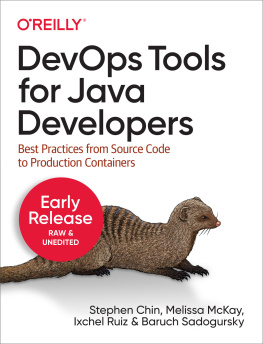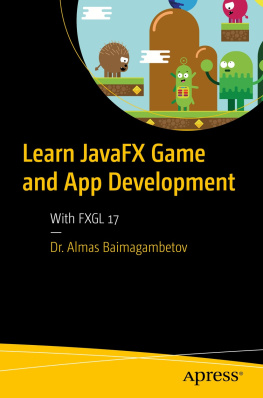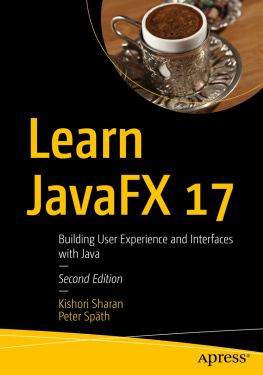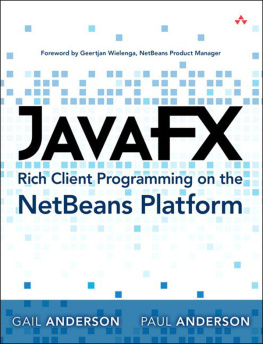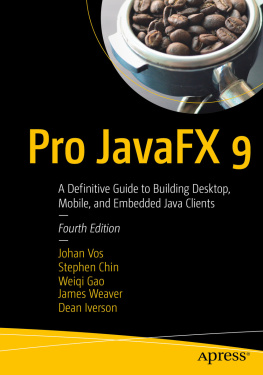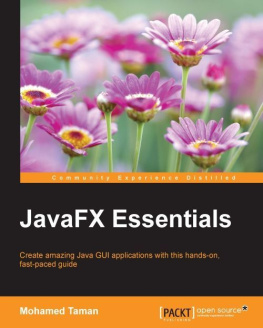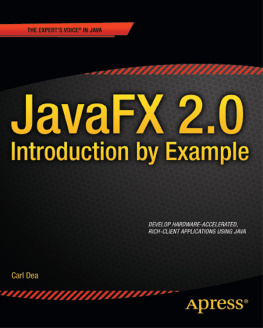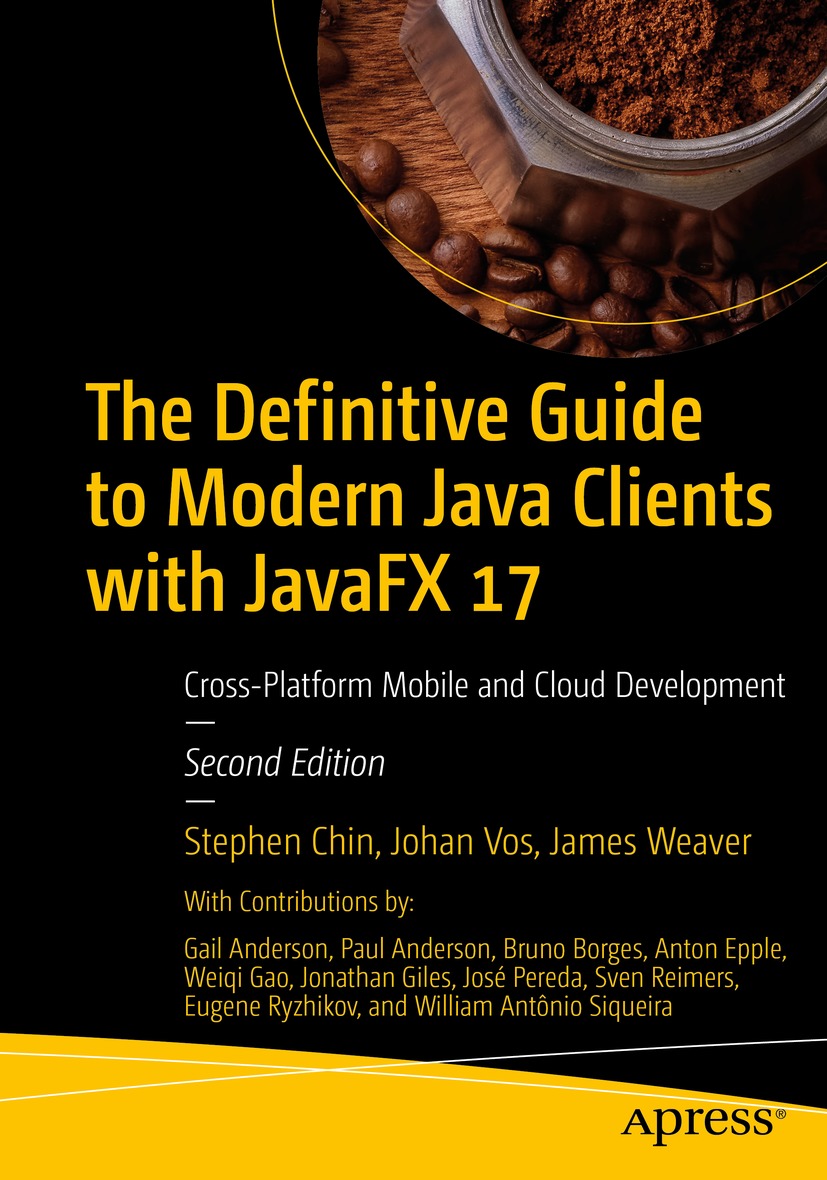Stephen Chin - The Definitive Guide to Modern Java Clients with JavaFX 17: Cross-Platform Mobile and Cloud Development
Here you can read online Stephen Chin - The Definitive Guide to Modern Java Clients with JavaFX 17: Cross-Platform Mobile and Cloud Development full text of the book (entire story) in english for free. Download pdf and epub, get meaning, cover and reviews about this ebook. year: 2021, publisher: Apress, genre: Home and family. Description of the work, (preface) as well as reviews are available. Best literature library LitArk.com created for fans of good reading and offers a wide selection of genres:
Romance novel
Science fiction
Adventure
Detective
Science
History
Home and family
Prose
Art
Politics
Computer
Non-fiction
Religion
Business
Children
Humor
Choose a favorite category and find really read worthwhile books. Enjoy immersion in the world of imagination, feel the emotions of the characters or learn something new for yourself, make an fascinating discovery.
- Book:The Definitive Guide to Modern Java Clients with JavaFX 17: Cross-Platform Mobile and Cloud Development
- Author:
- Publisher:Apress
- Genre:
- Year:2021
- Rating:3 / 5
- Favourites:Add to favourites
- Your mark:
The Definitive Guide to Modern Java Clients with JavaFX 17: Cross-Platform Mobile and Cloud Development: summary, description and annotation
We offer to read an annotation, description, summary or preface (depends on what the author of the book "The Definitive Guide to Modern Java Clients with JavaFX 17: Cross-Platform Mobile and Cloud Development" wrote himself). If you haven't found the necessary information about the book — write in the comments, we will try to find it.
Build enhanced visual experiences and design and deploy modern, easy-to-maintain, client applications across a variety of platforms. This book will show you how these applications can take advantage of JavaFXs latest user interface components, 3D technology, and cloud services to create immersive visualizations and allow high-value data manipulation. The Definitive Guide to Modern Java Clients with JavaFX 17 is a professional reference for building Java applications for desktop, mobile, and embedded in the Cloud age. It offers end-to-end coverage of the latest features in JavaFX 17 and Java 17.
Among the many new or updated JavaFX features covered are the FX Robot API, for simulating user interaction; customized step repeat timing for the Spinner control; Marlin FX; the ColorPicker color palette; and the GetCenter method.After reading this book, you will be equipped to upgrade legacy client applications, develop cross-platform applications in Java, and build enhanced desktop and mobile native clients.
What You Will Learn:
- Create modern client applications in Java using the latest JavaFX 17 and Java 17 LTS Build enterprise clients that will enable integration with existing cloud services
- Use advanced visualization and 3D features
- Deploy on desktop, mobile, and embedded devices
Who This Book Is For:
Professional Java developers who are interested in learning the latest client Java development techniques to fill out their skills set.
Stephen Chin: author's other books
Who wrote The Definitive Guide to Modern Java Clients with JavaFX 17: Cross-Platform Mobile and Cloud Development? Find out the surname, the name of the author of the book and a list of all author's works by series.



